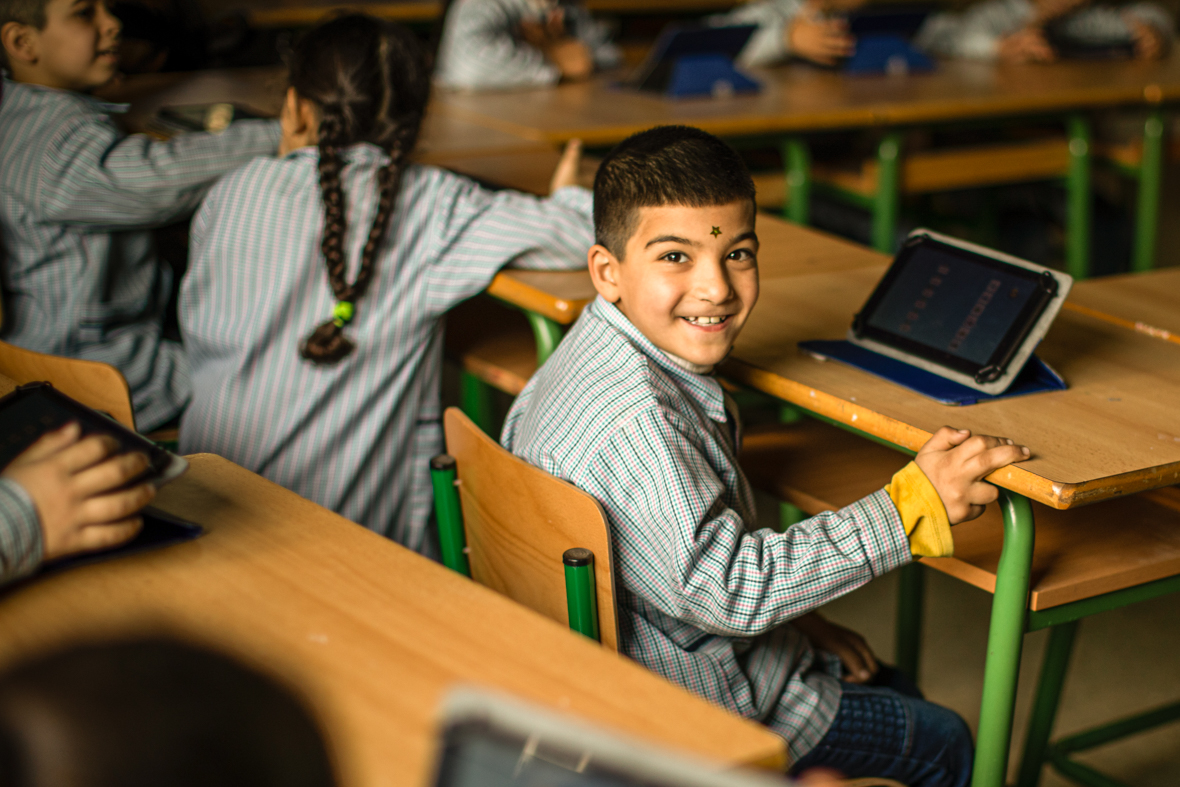
Efforts to get all children in school stall as conflicts deprive millions of education
Children in conflicts, Education funding, Education in emergencies
Refugees from Central African Republic in a learning space at Borgop site in Cameroon Picture: UNICEF/Rich
The year 2030 may seem a long way off. But it’s less than 14 years until EVERY country is due to have EVERY child completing primary and secondary education.
That was the promise made in the Sustainable Development Goals launched earlier this year. And it’s going to take a massive effort – because the number of out-of-school children is stagnant.
There was a steady fall in the numbers of excluded children and adolescents from the year 2000 to 2007. But since then, there has been very little progress.
There are 61 million children of primary school age (six to 11 years old) and 60 million of lower secondary school age (12-14) who are out of school, according to new data for 2014 from the UNESCO Institute for Statistics (UIS). That compares to 59 million and 65 million in 2013.
These findings are revealed today in a paper released jointly by UIS and the Global Education Monitoring (GEM) Report.
A huge number of them live in countries affected by armed conflict – 35% (21.5 million) of the out-of-school primary-age children and 25% (15 million) at lower secondary level.
And that doesn’t even include the millions of children affected by other humanitarian emergencies, including natural disasters and the Ebola outbreak that began in 2014 and closed every school in three West African countries.
A total of 75 million children around the world are missing out on their education, receiving poor quality schooling or at risk of dropping out of school altogether because of humanitarian emergencies.
Syrian refugees at school in Lebanon’s Bekaa Valley Picture: Adam Petterson Panos/DFID
The Education Cannot Wait fund was launched at the World Humanitarian Summit in May. It aims to reach more than 13.6 million children and youth living in crisis situations with quality education over the next five years and 75 million by 2030.
Now world leaders must step up and back up their promises with the cash needed so the fund can deliver quality education where it is most needed.
Follow the pledges on our Education Cannot Wait funding tracker
UNESCO Director-General Irina Bokova said: “Countries have promised to provide every child with a primary and secondary education by 2030. These new findings show the hard work ahead if we are to reach this goal.
“Our focus must be on inclusion from the earliest age and right through the learning cycle, on policies that address the barriers at every stage, with special attention to girls who still face the greatest disadvantage.”
The UNESCO report reveals that of the 61 million primary-age children out of school, 34 million are in sub-Saharan Africa. More than a fifth of children aged five to 11 and one in three 12 to 14 -year-olds are not in education.
For the first time, UNESCO includes estimates for those of upper secondary school age (15-17 years) who are not in education – 142 million of them.
This graph shows how the primary and lower secondary out-of-school rates fell from 2000 to 2007 but have since stagnated
Statistics revealed in the report include:
- Between 2000 and 2007, the primary out-of-school rate fell from 15% to 10% – but then declined only to 9% by 2014
- The lower secondary out-of-school rate fell from 25% in 2000 to 18% in 2007 and then dropped slightly to 16% by 2014
- One in 11 primary-age children and one in six lower secondary-age adolescents around the world are not in school
- Of the 61 million out-of-school primary-age children, more than a third live in six nations: Nigeria – 8.7million; Pakistan – 5.6 million; India – 2.9 million; Sudan – 2.7 million; Ethiopia – 2.1 million; Indonesia – two million
- In Western Asia, 89% of out-of-school children, adolescents and youth lived in conflict-affected countries
- In terms of gender and primary education, 10% of girls are out of school compared to 8% of boys. The widest gender gap is in sub-Saharan Africa, where 23% of girls and 19% of boys are out of school
- Estimates of the number of out-of-school children and youth would probably be even higher if more reliable data was available for refugees and internally displaced people
The report says it is “an extraordinary challenge” to get all adolescents and youth into secondary education by 2030.
The Global Education Monitoring Report team estimates $39 billion will be needed every year to fill the funding gap and achieve this target in low and lower-middle-income countries.
It adds: “The international community cannot break yet another promise and deny children their basic human right to education.
“Currently 25 million children are expected to never attend school. It is essential to bridge the annual financing gap needed to provide 12 years of quality education to all children and youth, including marginalised groups. There are no shortcuts.”
More news

